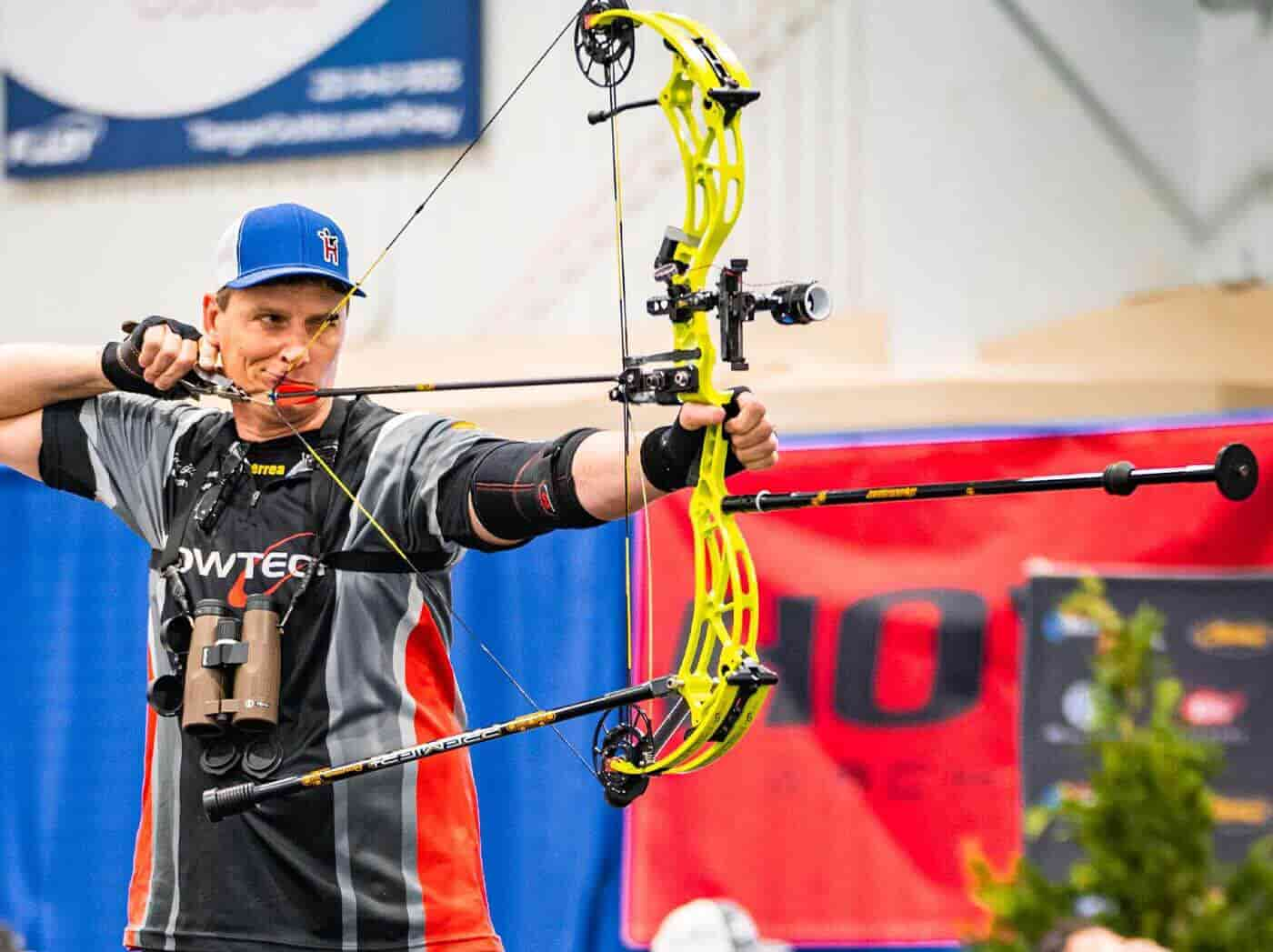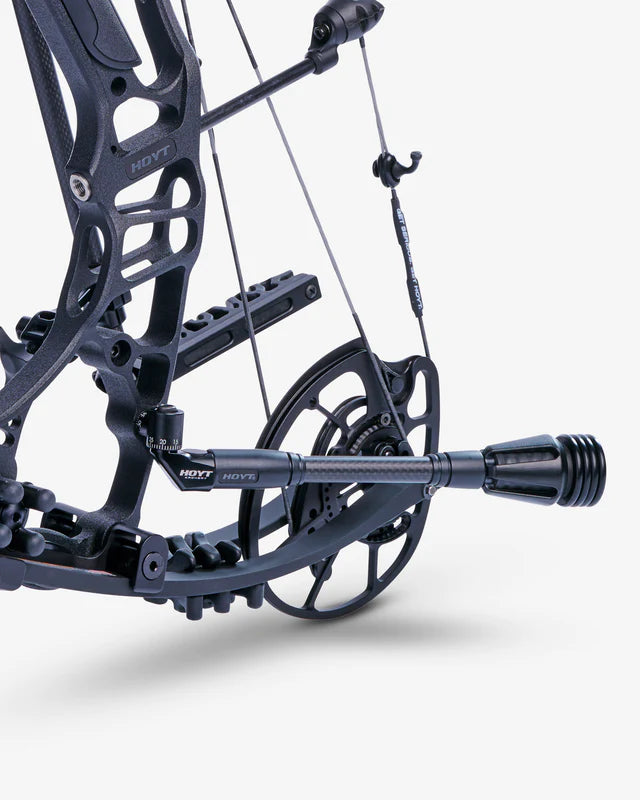Archery Stabilizer Essentials: Improving Your Shooting Experience
Archery Stabilizer Essentials: Improving Your Shooting Experience
Blog Article
Master the Art of Archery: Comprehending the Value of a Stabilizer in Your Arrangement
Archery, an old sporting activity that requires focus, skill, and precision, has astounded people for centuries. Whether one is a seasoned archer or just starting their journey, the relevance of a stabilizer in their arrangement can not be overemphasized. This essential item of equipment plays a considerable function in boosting precision and boosting general efficiency. By understanding the advantages of utilizing a stabilizer, considering the right aspects when selecting one, and appropriately setting up and readjusting it, archers can elevate their skills to brand-new heights. Allow us discover the complexities of grasping the art of archery and discover the invaluable function that a stabilizer plays in achieving success on the variety.
The Function of a Stabilizer in Archery
A stabilizer plays an essential function in archery by improving balance and reducing vibrations during the shot. A stabilizer aids to neutralize these resonances by absorbing and dissipating the power (archery stabilizer).
One of the major benefits of a stabilizer is its capability to improve equilibrium. The weight of the stabilizer aids to disperse the weight uniformly, lowering the stress on the archer's arm and boosting security.
In enhancement to balance, a stabilizer additionally aids to lower torque. When an archer launches the bowstring, there is a natural propensity for the bow to rotate in the hand. This turning, called torque, can trigger the arrowhead to drift off-course. The weight and layout of a stabilizer counteract this turning, making sure a more accurate and constant shot.
Benefits of Making Use Of a Stabilizer
The usage of a stabilizer in archery uses various advantages that improve an archer's efficiency and total shooting experience. By soaking up and dampening these resonances, the stabilizer improves the security of the bow, permitting for more constant and exact shots.
Second of all, a stabilizer helps to stabilize the bow by adding weight to the front end. This weight circulation combats the all-natural tendency of the bow to tip ahead upon release, minimizing the quantity of movement and enhancing the archer's capability to keep objective on target.

Finally, a stabilizer can additionally act as a shock absorber, lowering the shock and recoil experienced upon launch. This not just boosts the convenience of shooting but also decreases the danger of injury or strain on the archer's body.
How a Stabilizer Boosts Accuracy
Enhancing the precision of an archer's shots, a stabilizer plays an important role in boosting total performance. archery stabilizer. By adding security to the bow, a stabilizer assists reduce the unwanted movement and resonance that can occur throughout a shot. This decrease in motion permits the archer to preserve a consistent goal, resulting in even more accurate and constant shots

In addition, a stabilizer helps to moisten resonances that take place upon release. These resonances can cause the bow to tremble, affecting the arrowhead's trajectory and accuracy. By taking in and dissipating these vibrations, a stabilizer helps to maintain the bow's stability and ensure a smooth and exact shot.
In addition, a stabilizer can likewise assist in balancing the weight circulation of the bow (archery stabilizer). By adding weight to the front of the bow, a stabilizer aids to stabilize the weight of devices, such as sights or quivers, which may be affixed to the bow. This well balanced weight distribution helps the archer maintain a stable and regulated shooting setting, leading to improved precision
Factors to Consider When Choosing a Stabilizer
When choosing a stabilizer for your bow, it is important to consider a number of factors that will contribute to its overall efficiency why not find out more and viability for your individual shooting style. The initial aspect to take into consideration is the Get More Info length of the stabilizer.
An additional factor to take into consideration is the weight of the stabilizer. The weight of the stabilizer can impact the balance of your bow. A heavier stabilizer can aid to reduce resonances and boost stability, leading to a steadier shot. A lighter stabilizer might be liked by shooters who focus on maneuverability and rate.
In addition, it is very important to consider the design and building of the stabilizer. Some stabilizers have flexible features, such as flexible size or flexible weights, which allow you to personalize the stabilizer to your particular needs. The materials used in the building and construction of the stabilizer can also impact its efficiency. Carbon fiber stabilizers are light-weight and durable, while aluminum stabilizers provide a balance between weight and strength.
Lastly, it is necessary to consider your shooting design and preferences. Different stabilizers might work better for sure shooting designs, such as target shooting or searching. It is recommended to speak with seasoned archers or professionals to identify which stabilizer will best suit your individual needs. In general, taking into consideration these aspects will help ensure that you select a stabilizer that enhances your capturing experience and boosts your accuracy.
Tips for Properly Adjusting a stabilizer and mounting
Proper setup and modification of a stabilizer is crucial for optimizing its performance and making sure optimal capturing precision. When setting up a stabilizer, it is crucial to follow a couple of key steps to ensure its efficiency. First, figure out the appropriate length of the stabilizer based upon your capturing design and preferences. Longer stabilizers supply more stability yet can be less manoeuvrable, while shorter stabilizers supply enhanced ability to move but might compromise stability. Once you have picked the proper size, attach the stabilizer to the bow utilizing the provided installing hardware. Make sure that the stabilizer is safely fastened and lined up with the bow's riser.
After installing the stabilizer, it is required to make adjustments to achieve the desired equilibrium and shot uniformity. Begin by changing the weight circulation along the stabilizer. Furthermore, consider changing the angle of the stabilizer to go to the website make improvements the shot.

Conclusion
In verdict, a stabilizer plays a critical role in archery by boosting precision and lowering bow torque. When choosing a stabilizer, elements such as size, material, and weight ought to be taken into consideration to fulfill private requirements.
Furthermore, a stabilizer can likewise aid in stabilizing the weight circulation of the bow. By including weight to the front of the bow, a stabilizer helps to balance the weight of devices, such as quivers or views, which might be connected to the bow. Some stabilizers have flexible features, such as flexible length or adjustable weights, which permit you to personalize the stabilizer to your particular demands. Carbon fiber stabilizers are lightweight and durable, while aluminum stabilizers provide a balance between weight and rigidness.
Longer stabilizers offer more security however can be less maneuverable, while much shorter stabilizers use increased ability to move however may sacrifice stability.
Report this page